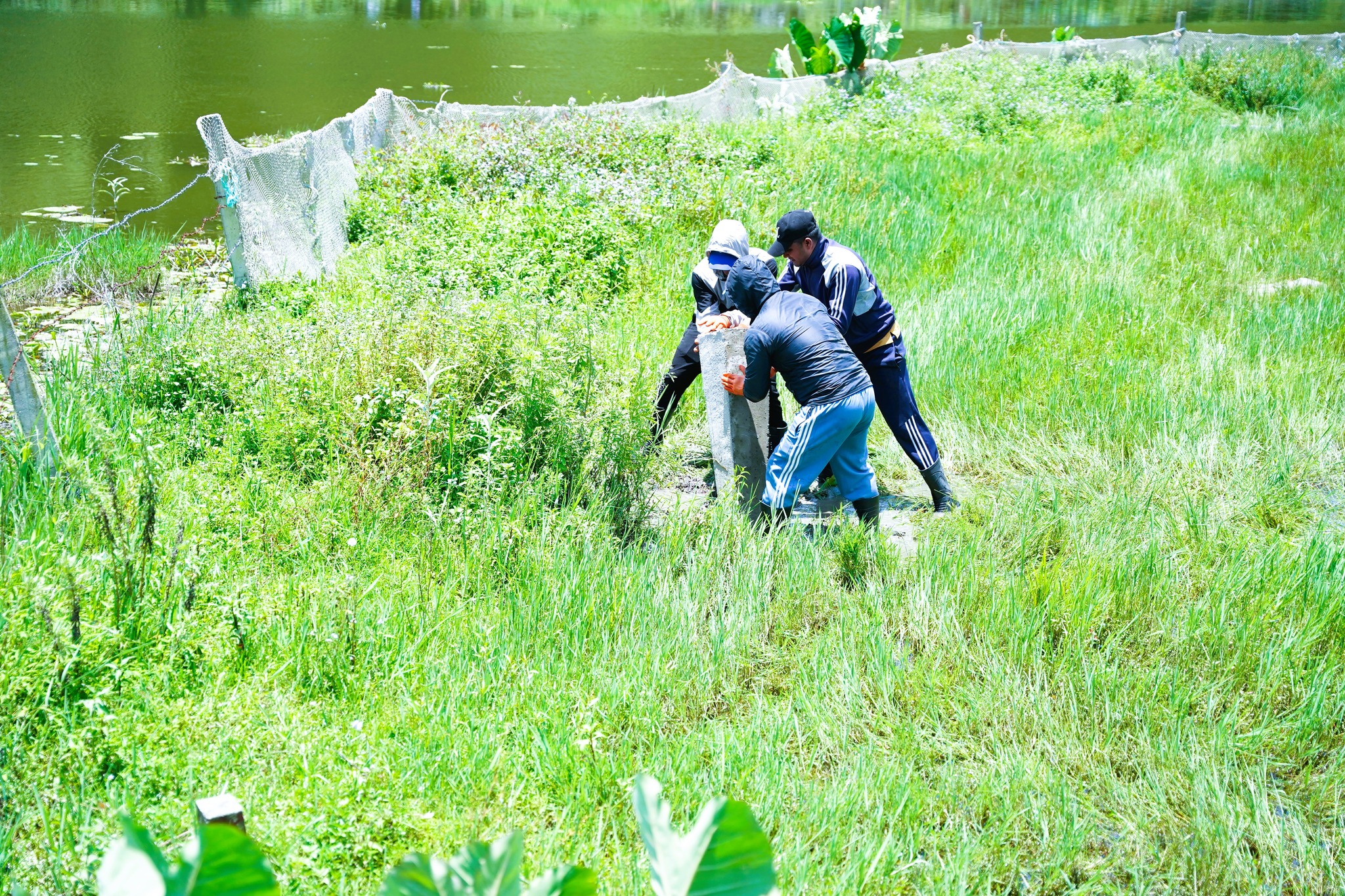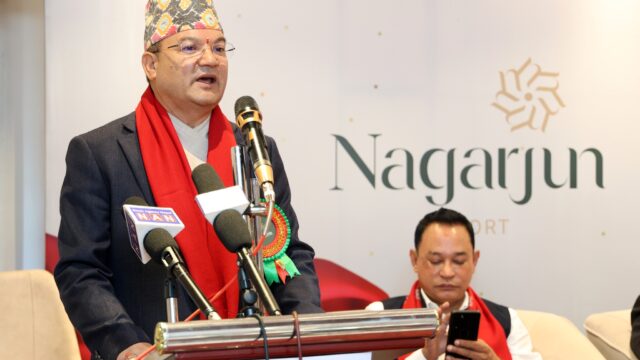In a major step toward preserving one of Nepal’s most iconic natural treasures, a total of 360 border pillars have been installed at Tal Ghar of Fewa Lake in Pokhara as part of the lake’s official boundary demarcation. The ongoing effort follows a directive from the Supreme Court of Nepal, emphasizing the lake’s long-overdue conservation.
Supreme Court’s Directive Driving Conservation
The boundary demarcation work at Fewa Lake commenced after the Supreme Court, on Ashar 4, 2080 BS, issued a writ of mandamus to the Government of Nepal, Gandaki Province, and Pokhara Metropolitan City. The court ordered the removal of all structures, both temporary and permanent, within 65 meters from the lake’s highest monsoon water level, declaring the area a “Green Buffer Zone” to protect the environment and natural heritage.
Following this decision, Pokhara Valley Urban Development Committee, under the coordination of Office Chief Prakash Subedi, took the lead in executing the pillar installation to legally establish the lake’s perimeter. The initiative began on Jestha 17, with the joint collaboration of the Pokhara Metropolitan City, Gandaki Province Government, and the Federal Government of Nepal.
City Leadership Committed to Fewa’s Protection
On the ground, Pokhara Metropolitan City Mayor Dhanraj Acharya personally inspected the ongoing installation work at the Bhakunde Machha Pokhari area near Tal Ghar. During his inspection, Mayor Acharya reaffirmed the city’s commitment to implementing the Supreme Court’s order and safeguarding Fewa Lake, a jewel of Pokhara and a symbol of Nepal’s natural and cultural identity.
“We are here witnessing a historic moment. This initiative is a testament to our collective dedication to preserving the ecological, cultural, and economic significance of Fewa Lake. The Metropolitan City is fully committed to its beautification and long-term protection,” said Mayor Acharya. He also encouraged and praised the surveyors, technical teams, municipal police, Nepal Police, and Armed Police Force working on the ground.
Strategic Implementation in Two Phases
According to Pokhara Metropolitan officials, the conservation project is being implemented in two phases. In the first phase, border pillars are being erected around Tal Ghar, one of the most densely encroached areas. The second phase will expand this effort around the full perimeter of the lake.
Based on the most recent geographic and cadastral studies, Fewa Lake’s total area has been established at 6.343 square kilometers, which is equivalent to 12,468 ropanis, 3 paisa, and 3 dam. Once complete, the project aims to install a total of 1,055 boundary pillars encircling the lake’s shoreline.
This process is not only a legal requirement but also a milestone for the preservation of Pokhara’s environmental, natural, and cultural heritage. By creating a clearly defined buffer zone, authorities hope to reverse the trend of uncontrolled urban sprawl and protect the lake from further ecological degradation.
A Symbol of Sustainable Tourism
Fewa Lake, often dubbed the “heart of Pokhara”, is one of Nepal’s top tourist attractions, drawing thousands of domestic and international visitors each year. The lake is famous for its serene waters, scenic boat rides, and the iconic reflection of the Machhapuchhre Himal on its surface.
Tourism entrepreneurs, environmentalists, and residents have long voiced concerns over the encroachment and pollution affecting Fewa Lake. Illegally constructed buildings, unregulated tourism infrastructure, and waste disposal have been blamed for deteriorating the lake’s ecosystem.
The ongoing conservation efforts are thus seen not only as a legal obligation but also as a way to ensure the sustainability of Pokhara’s tourism industry, which significantly contributes to the local and national economy.
Public Participation and Inter-Agency Coordination
Mayor Acharya emphasized that the protection of Fewa Lake is not the responsibility of the government alone. “This is a shared mission. Every citizen, stakeholder, and institution must play a part in safeguarding our common heritage,” he said.
To ensure the plan’s success, inter-agency coordination and public awareness campaigns will be scaled up. Local residents are being encouraged to participate in the conservation effort, especially in maintaining the newly designated green buffer zone.
Moving Forward: Enforcement and Monitoring
As the installation of boundary pillars progresses, authorities will soon begin enforcing the Supreme Court’s directive by removing illegal structures within the 65-meter zone. A multi-agency monitoring mechanism will be activated to ensure compliance and prevent further encroachments.
Experts believe that once implemented fully, the project will restore the natural integrity of Fewa Lake, improve water quality, support biodiversity, and strengthen Pokhara’s image as an eco-friendly tourism destination.
The Fewa Lake boundary demarcation stands as a powerful example of how legal action, civic responsibility, and political will can come together to protect natural resources. For Pokhara and Nepal as a whole, this is a step toward more sustainable urban development and a future where tourism and nature coexist in harmony.






